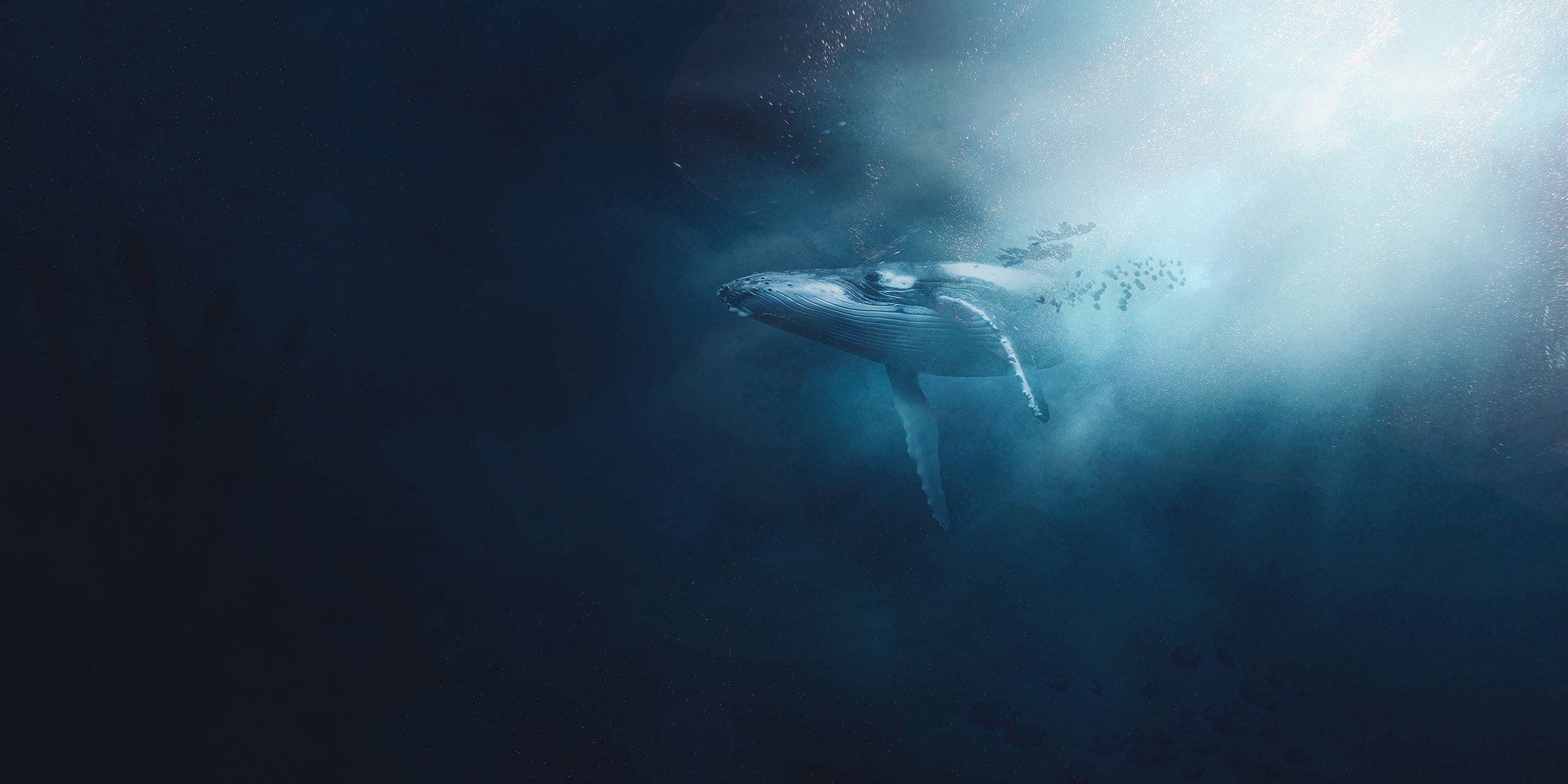Originally published 15 January 2002
What is it about whales?
Why do we love them so? People will travel far and risk seasickness to see their shiny backs breach the waves. We paint their images on the sides of buildings, buy innumerable posters showing them aswim in their element. It is not just the colossal size of the largest whales that fascinates us; we gasp with joy at the sight of porpoises and dolphins, too. The whole family of cetaceans — the seagoing mammals — have our affections.
We love their sleek wetsuit skin, their streamlined form. We love their massive dignity. A blue whale has a half-ton heart, 8 tons of blood, and consumes a million calories a day. So much life, lived with such grace.
There’s something more. We recognize a kinship. The whales are air- breathing, warm-blooded, live-birthing, pup-nursing cousins. Their brains, some of them, are bigger than our own. We harbor the persistent, if unfounded, suspicion that they may be smarter than us. They spend more time playing than searching for food. They have few enemies (other than humans). They spend their lives making love and music.
They seem to live in a prelapsarian innocence, a Zen-like state of tranquility. When a whale lifts its body above the waves and we glimpse its steely eye, it seems to be regarding us with a kindly condescension, although that impression surely tells us more about ourselves than about whales. It would be wonderful to know what goes on inside their huge brains: Do they feel affection, pleasure, fun? Do they respond to beauty? Do they ever wonder in some dim preconscious way why it is that we will go to almost any length to save them when they beach themselves, yet pursue them to the ends of the Earth to kill them?
The ancestors of modern whales once walked the Earth. Sixty million years ago, all mammals were terrestrial. But the sea beckoned as a source of food or safety. Certain mammals acquired aquatic habits, and as millions of generations passed, evolved ever more useful adaptations to a watery realm. Bodies became elongated and streamlined. Forelimbs became flippers. Hind limbs and pelvis shrank in size and finally became internal. The tail acquired a fleshy horizontal fluke for propulsion.
The broad outlines of this story have been assumed for years, but the fossil record for cetacean evolution is spotty. What did the whales’ terrestrial ancestor look like? Which among today’s terrestrial mammals are their nearest relatives? These are technical questions that turn upon detailed comparisons of the skeletons of living species and the available cetacean fossils.
Recently, new fossil discoveries from Pakistan have filled in the picture, providing missing links between Earth-walking whales and our present-day leviathans. Line up some of the relevant fossil species—Diacodexis, Pakicetus, Ambulocetus, Dorudon—and you have a step-by-step transition from hoofed terrestrial animal (ancestral to our cows, sheep, pigs, deer, and hippos) to a web-footed amphibian, and finally to a fully aquatic swimmer.
A cow and a whale would appear to be unlikely cousins, until you start comparing details of their skeletons and putting them into a family tree of fossils dug up around the world. Of course, any such story remains controversial for the paleontologists who debate subtle differences of skulls, ankle bones, and vertebra, and scratch their heads over the details of family relationships. Theirs is, after all, a historical science, like trying to reconstruct the rich panoply of an ancient civilization from few sketchy clues dug up in the sand.
Last fall I had the privilege of participating in the dedication of the new, state-of-the-art Phelps Science Center at Phillips Exeter Academy in Exeter, N.H. The building’s most dramatic adornment is the skeleton of a 27-foot humpback whale that hangs in the multistory lobby. The skeleton has been provided with a fiberglass fluke, and mounted as if the animal were spiraling toward the surface of the sea.
This young male humpback beached himself in spring 2000 on Cape Cod, and died there. After an autopsy conducted by the New England Aquarium, the bones were given to Phillips Exeter, cleaned, and expertly mounted. Even stripped of its flesh, the animal has grace.
The skeleton is more than a decoration. The Phillips Exeter science faculty uses it for instruction, and no story they might tell is more important than the unity of life by common descent. Within that more general epic, no chapter more intriguingly engages our imaginations than the tale of how a fleet-footed, wolf-sized, hoofed ancestor of cows, pigs and hippos took to the sea, and in the course of 50 million years became transformed into an undisputed lord of that watery realm.



